After the Forest: From Stump Ranches to Fields
After the Forest: From Stump Ranches to Fields
By Sharon Howe, Research Librarian
Sedro-Woolley Museum
As loggers cut the forests along the Skagit, they left behind land that was literally dotted with huge deeply rooted stumps that challenged the establishment of farms and the towns that depended on agricultural development. By the early 1900s, Sedro-Woolley had become one of those towns.
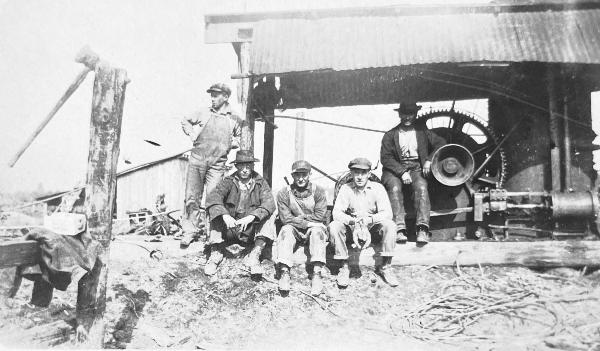
John Harrison (standing left) with steam donkey engine and crew, ready to pull stumps on his farm east of Sedro-Woolley.
Although the lumber industry remained its foremost support, Sedro-Woolley sought to diversify. That meant solving the problem of what to do about the high stumps that the cross-cut saws of the time left behind, because they could not handle the diameter at the base of the huge trees. Sawyers cut notches into the trees at the diameter their saws could handle and worked from metal-tipped springboards pushed into the notches.
If they had enough acreage and money, farmers could blow stumps with dynamite, a chancy project. More often, they hired a steam donkey engine from a local logging company to pull the stumps out by the roots. They piled the stumps around a pole tree and burned them.
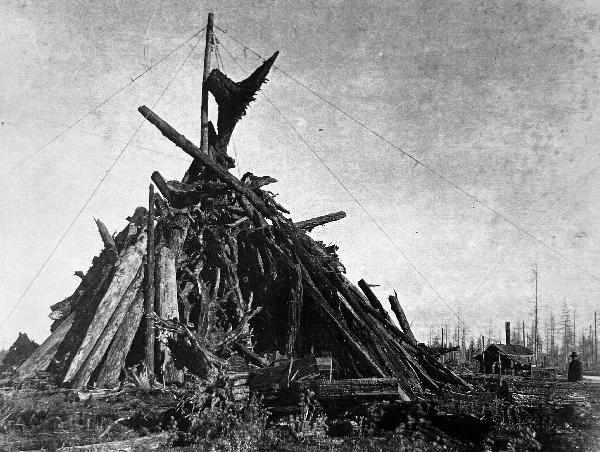
The donkey engine cable rigging deposits a stump at the top of the burn pile.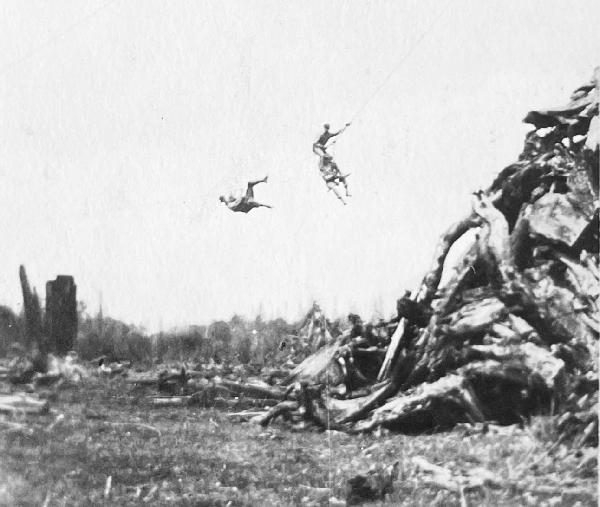
Adventurous types climb the donkey engine rigging to the burn pile.
However, many of the stump ranches were too small to afford these options. Another local industry provided the solution to that problem. What had started in 1902 as the Sedro-Woolley Iron Works, was transformed into the Skagit Steel and Iron Works in 1914.
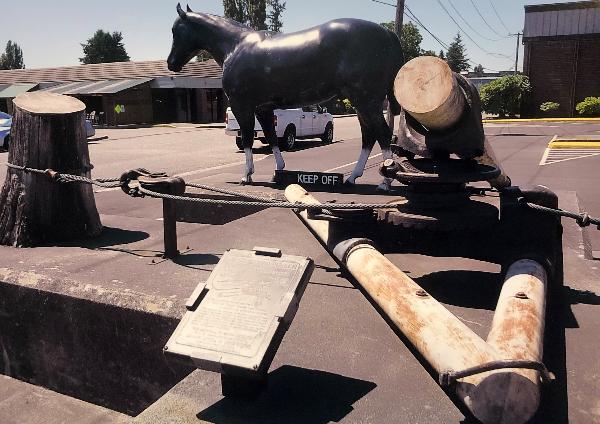 The Skagit Steel Pacific Stump Puller is all set up to work in this display at the corner of Metcalf and Warner in the City Parking Lot.
The Skagit Steel Pacific Stump Puller is all set up to work in this display at the corner of Metcalf and Warner in the City Parking Lot.
Although farmers could order stump pullers from Eastern manufacturers, these iron machines proved to be no match for the stumps that loggers left behind in Pacific Northwest forests. Skagit Steel’s first in-house designed and manufactured product was an all-steel stump puller that proved a match for the logged-off remains of the region’s huge trees. The company introduced the two-horse Pacific Stump Puller in 1914, and soon added the smaller Pacific Junior, advertising its ability to clear land with “one man and a horse.”
However, even this effective stump puller proved to be beyond the pocketbooks of many of the smaller land holders and hampered the sale of logged-off land that Sedro-Woolley’s real estate enterprises were eager to sell to prospective farmers.
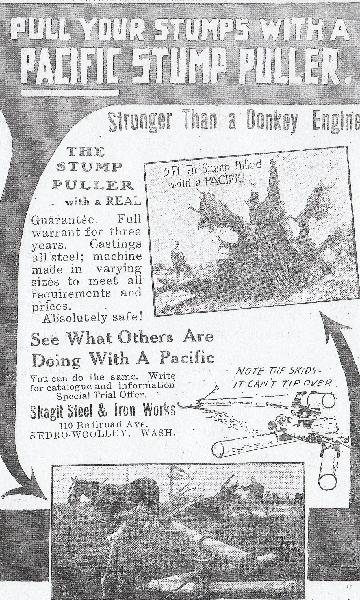
Advertisement from the 1914 Skagit County Fair premium list booklet. Skagit advertised the Pacific extensively in farm-related publications covering Washington, Oregon, Idaho, and Montana.
In 1914, David McIntyre, president of Skagit Steel, and Harry Devin of Sedro Land Company persuaded the Commercial Club to purchase several of the two models of the Pacific Stump Puller and rent them to stump ranchers in the area. The club planned to keep rental cost low to make clearing land as cheap as possible. As reported in a May 1916 Skagit County Times article, “Club members realize that whatever can be done to benefit the ranchers will eventually be assets to the commercial interests of the city.”
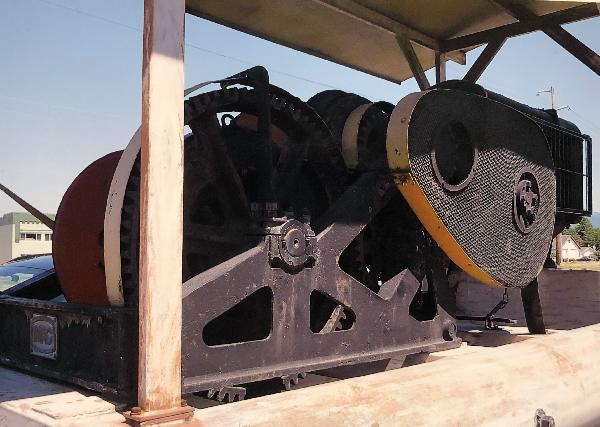
This Little Tugger, displayed on Metcalf Street near Gibson, is like the one brought into the Commercial Club's stump clearing rental program.
By 1922, the Commercial Club added to the rental project a gasoline-powered hoist, which was nicknamed the Little Tugger. Sid McIntyre, Skagit Steel engineer, invented the machine, which was sold all over the world. A Little Tugger can be seen on Metcalf at the east end of downtown. By 1925, the club began to distribute dynamite to blow up the most stubborn stumps. The rental program proved popular and continued to at least 1930, helping to turn stump ranches into farms.
NOTE: You can see a Pacific stump puller in the Skagit Steel gallery at the Sedro-Woolley Museum. A Pacific model that is set up with lines and a horse can be seen at the City Parking Lot, corner of Metcalf and Warner. Museum exhibits feature logging with crosscut saws and springboards. The Research Library offers access to materials on Skagit Steel, Sedro Land Company, logging, and agriculture in Central Skagit County.
